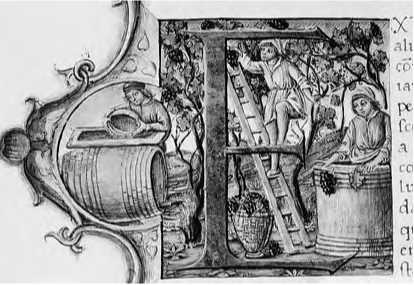The upper classes as well as people who grew their own grapes drank wine on a daily basis. Viniculture was a good business in southern Europe, with vineyards operating commercially as far north as the 49th parallel. In France the mouth of the Loire River was the demarcation line for large-scale wine production. Wine made in Europe was not stored in bottles at this time, but in wooden barrels, or casks, and it was rather high in alcohol content. Wine did not age well, often turning to vinegar when being transported in hot weather. New wine was preferable, at times commanding prices as much as eight times higher than those for older wine. in general, both red and white wine were considered undrinkable after five or six years of storage in the cask.
The Azores and the islands of Madeira and the Canaries had flourishing wine markets; ships stopped in the Azores to take on fresh barrels of wine, and vineyards in Madeira and the Canaries sent wine via the water routes to England and the Americas. Although wines from Chile were already gaining a reputation in the 16th century, Europeans drank wine made chiefly in Europe. Because wine was such a necessity among the upper classes, gov-
Handbook to Life in Renaissance Europe

8.4 Historiated initial E depicting grape picking and wine making. Manuscript on vellum of Pliny’s Natural History, Italy, 15th century. (Biblioteca Marciana, Venice Italy/Lauros / Giraudon / Bridgeman Art Library)
Ernments knew that they could easily tax wine merchants, providing a steady source of income to the municipalities that instigated such a tax. Many merchants set up their wine stalls outside town walls to avoid payment.




 World History
World History









